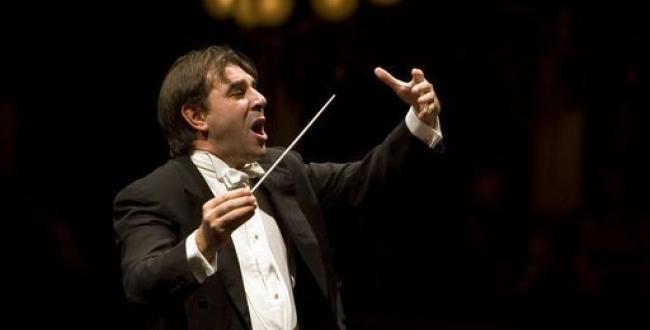It was clear that there was an Italian on the podium. Muted strings invoked an atmosphere so crepuscular that, when one involuntarily closed one’s eyes, the murmur of voices intoning the words “Requiem aeternam” seemed to come from deep inside the cathedral. The theatricality of Verdi’s Messa da Requiem is inescapable but what was also inescapable under Daniele Gatti’s baton was that every phrase, instrumental and vocal, is breathed as a singer might breathe it. Already, as the opening pages of the piece unfolded, one noted Gatti’s way of keeping the line fluent and singable with dovetailed diminuendos taking the sound away on the breath, as it were. The Philharmonia Orchestra and Chorus phrased like the old alliance we know them to be from the days when Carlo Maria Guilini first brought a truly Italianate Verdi Requiem to the capital.
And then the soloists entered, and one by one Gatti’s hand-picking revealed highly distinctive but complementary voices with the emphasis clearly on taste and artistry as opposed to flamboyance and theatricality. The lovely covered sound of Bulgarian soprano Krassimira Stoyanova (who made such an impression lately in the Royal Opera’s Eugene Onegin) was limpid, as it must be, above the stave, mezzo Marie-Nicole Lemieux has the potential (and the facility) to flaunt her ample instrument, not least in its lowest register where she can discreetly edge the chest notes to dramatic effect. But good taste prevailed over effect and, though she sang with great passion, she resisted playing the imperious Amneris card even where the “Liber scriptus” afforded her the opportunity so to do.
The theatricality was in the silences
She and Stoyanova were the most musical of alliances in the “Recordare”, their lines beautifully paralleled and dovetailed, their interplay very intimate and personal in the way that Lemieux sought to lighten her big sound and Stoyanova was free but never vulgar with the portamento.
The tenor Francesco Meli impressed me hugely. This piece really separates the men from the boys, of course, and requires absolute mastery (and control) of the transition between chest and head voice. So many come unstuck and make audible the shift between registers. Meli managed this aspect of the role pretty seamlessly, the “Ingemisco” exhibiting fine control of both register and dynamics, the later “Hostias” transfixing in the purity of its supplication with Gatti mirroring the sound in seraphic violins at the close. I loved the openness of Meli’s sound, too - it looked you straight in the eye, you felt secure in its truthfulness.
Carlo Columbara, the bass, chilled the hall with his distinctive timbre, the repetition of the word “Mors” (“Death”) underlining the certainty and astonishment of the "Days of Wrath" (“Dies irae”) now upon us. All he lacked for me was a degree more resonance in the sound.
Gatti took a distinctly emphatic approach (for me a little too emphatic) to the “Dies irae” as if to underline the fact that we were not in the theatre and that despite the thunder-cracks from bass drum and wildly rushing hellfire strings this was a sacred fresco not the auto-da-fé from Don Carlos. I missed, too, a proper distancing of the extra trumpets which should sound from "on high” not from the wings. The theatricality was in the silences - the gaping tremolando after the cut-off and, more shockingly, the huge and nerve-wracking pause before the return of this music in the “Libera me”.
Everything the Verdi Requiem is about comes together in this final section and, if Stoyanova didn’t really have the heft to convey the “fear and trembling” of her plea for deliverance, she most certainly conveyed an affecting vulnerability, rapt in the a capella return to the work’s opening “Requiem aeternam” and crowned with a high B-flat that didn’t just lift us heavenwards but was infused with a fearful intensity. What a piece.














Add comment